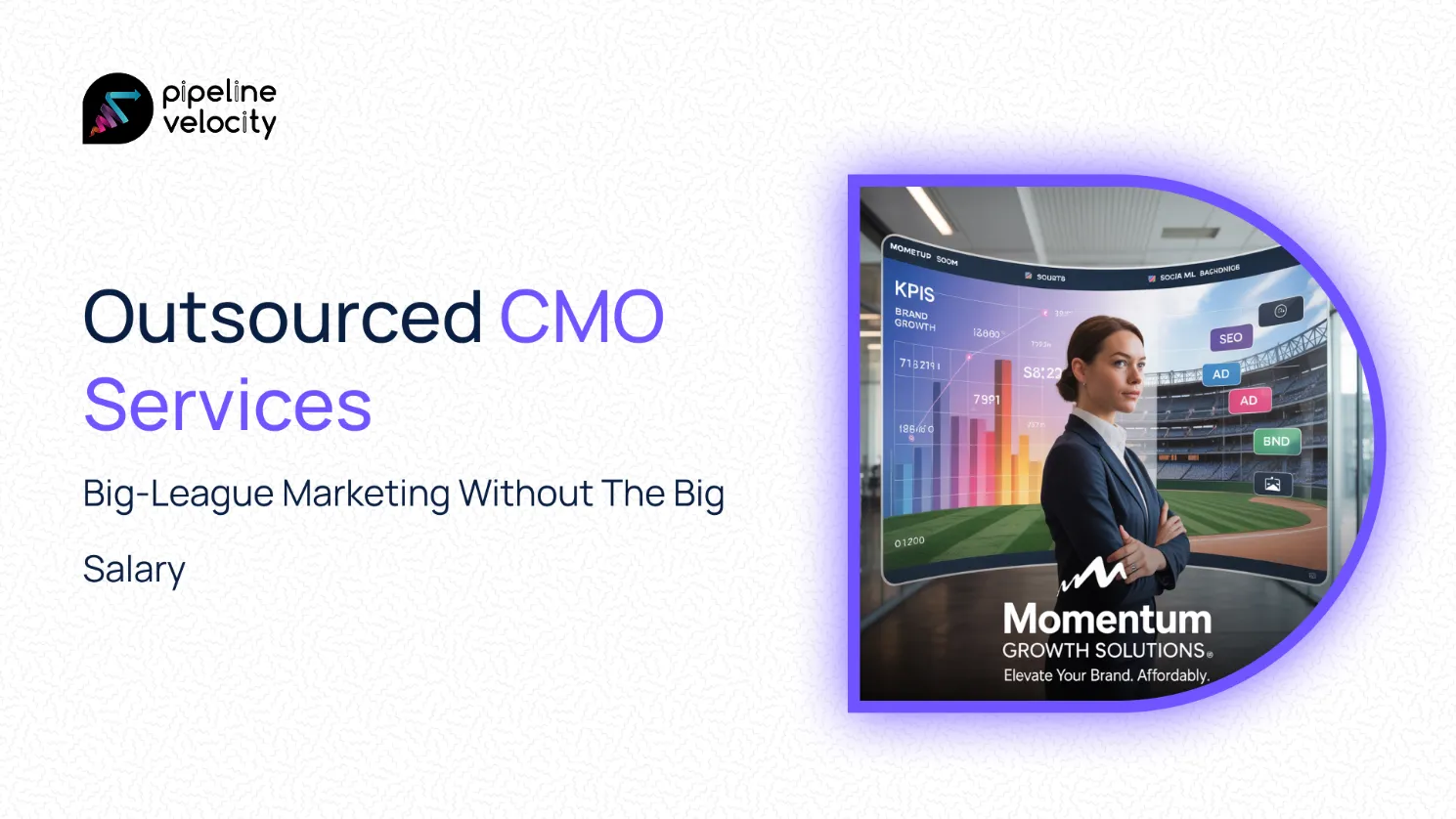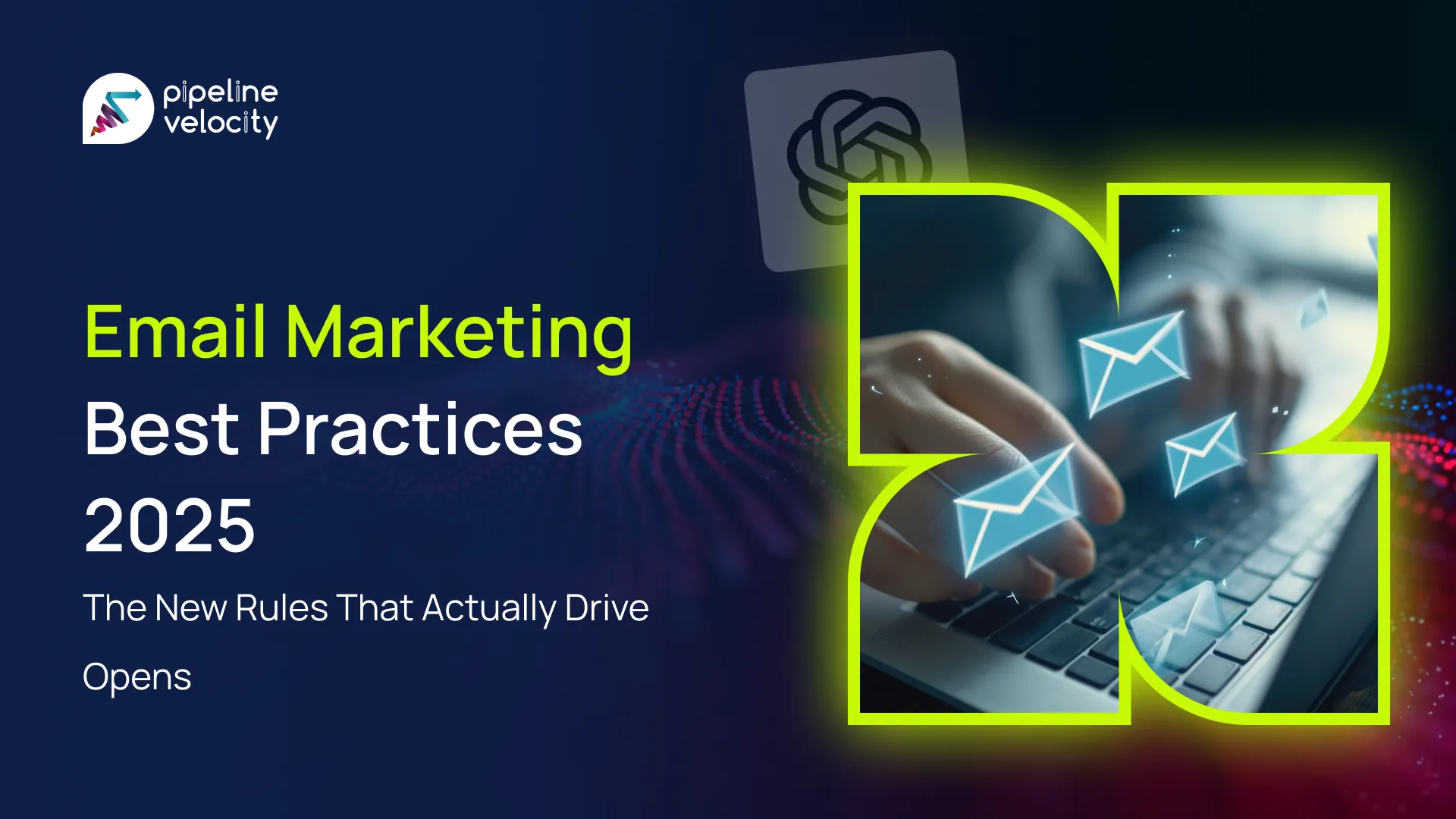Outsourced CMO services give you executive expertise without the overhead that drags growth. A fractional CMO usually works 10 to 40 hours a month and leads the plan, the message, and the KPIs that prove results. Most firms invest between 6,000 and 18,000 dollars per month based on scope and market rigor, then scale up or down as campaigns heat up. You see fast wins in 30 to 60 days as the leader fixes funnel leaks, focuses channels, and builds a simple scorecard. If you want durable lift in pipeline, bring in a marketing leader who treats your goals as their own and runs a go-to-market strategy with business discipline.
What an Outsourced CMO Really Brings to the Table
An outsourced chief marketing officer brings judgment, speed, and a proven path to measurable results. This leader sets a revenue target, backcasts the funnel math, and builds offers that speak to real buyer pain across key touchpoints. They translate strategy into experiments that raise website experience quality, improve content resonance indicators, and keep spend tied to pipeline. They guide teams with business rigor, align stakeholders on scorecards, and hold each initiative to clear performance indicators. You get senior stewardship that connects brand story, demand capture, and customer loyalty into one operating system.
Defining outsourced chief marketing roles in today’s business world
Companies use four labels for senior marketing help. Outsourced CMO, fractional CMO, interim CMO, and virtual CMO describe engagement models, not talent levels. Outsourced and virtual CMOs often manage the function like a CMO firm with a small specialist bench. Fractional CMOs commit defined time as executive consultants while your internal team and partners handle execution. Interim CMOs step in during transitions to protect momentum and keep the roadmap intact. Pick the mode that fits timing, scope, and your team’s current capacity.
Outsourced CMO vs fractional CMO and what separates them
Both models deliver strategic leadership, but they differ in time and scope. Outsourced CMOs often include hands-on execution and more resource allocation control. Fractional CMOs focus on strategy, orchestration, and accountability while your team or agency executes. If you want a deep comparison, read our guide on the fractional marketing leader vs full-time CMO. The right answer depends on whether you need a builder, a fixer, or a scaler, and how close you want the leader to live inside day-to-day campaigns.
Our services at Pipeline Velocity for CMO outsourcing
Our services at Pipeline Velocity blend executive expertise outsourcing with a flexible bench so you avoid full-time overhead. For leadership and structure, explore our Fractional CMO Services and end-to-end Growth Marketing Services. When organic demand is a priority, our SEO Services increase marketplace visibility and improve search engine optimization outcomes on Google. For capture and speed, our PPC Management and Integrated PPC + SEO packages tighten alignment between channels and landing pages.
We also harden the system that powers your engagement efforts. Our CRM Management Service connects forms, lead scoring, and lifecycle email so your marketing key performance indicators tell a clean story. Need consistent message and cadence across more touchpoints? Our Omnichannel Marketing keeps campaigns in sync from email marketing to LinkedIn and Facebook while your site carries the narrative forward.
The Real Work of an Outsourced CMO in Driving Business Growth
The leader turns goals into motion. They write positioning that clears the five-second test, build a content map that reflects buyer jobs-to-be-done, and enforce a single funnel taxonomy that ties spend to opportunities. They coach teams, simplify the tool suite, and clean dashboards so owners see truth, not noise. They use inbound marketing and targeted outbound plays together, then report weekly on pipeline lift, CAC payback, and net revenue retention trends. You move from random acts of marketing to an operating cadence that compounds.
Outsourced CMO Services That Move the Needle Fast
Speed matters, and the right levers do not require drama. Leaders start with offer clarity, fast pages, and disciplined query pruning in paid search to prevent overspending. They improve conversion with better copy, tighter social proof, and cleaner UX on your website, then extend reach with content marketing expertise that fuels SEO and email sequences. They stand up basic nurture that pushes qualified interest toward sales with less hassle. They protect productivity with sprint plans, short feedback loops, and a backlog ranked by impact and effort.
Outsourced CMO or In-House CMO and Choosing the Right Fit
Stage and urgency drive this call. If you need outcomes this quarter and do not want overhead expenses, outsourcing or a fractional chief marketing leader makes sense. Compare total cost to outcome, not just salary; current pay data for marketing managers sits in the six-figure band, which sets your baseline for in-house investment according to the Bureau of Labor Statistics. If you want a deeper look at risk and upside, see our take on fractional marketing as a low-risk, high-impact growth lever. Many firms start fractional to prove the model, then hire full-time once the engine runs clean.
Marketing innovation, agility, and scalability with CMO outsourcing
Marketing dynamics shift fast, and innovation wins. CMO outsourcing gives you agility to test bold ideas with less risk because your team scales up or down as the plan evolves. You can turn on a contractor for CRO, bring in a conversion writer for a sprint, or tap a performance media buyer when paid needs a tune-up. The outside perspective cuts bias and sparks new angles that raise resonance indicators in-market. You gain scalability without extra overhead costs while a single leader protects coherence.
KPIs, resonance indicators, and performance metrics that matter
Good programs live in the numbers. Define KPIs that connect to opportunities and revenue, then add resonance indicators like qualified replies on LinkedIn, branded search lift, and time on key pages. Keep performance metrics visible with a simple RevOps handoff and clean UTMs. For connective tissue across sales and marketing, read our guide on what revenue operations does. If the dashboard shows drift, reallocate budget early and document the learning so the whole team gets smarter.
Go-to-market strategies with business rigor and resource allocation
A strong go-to-market strategy starts with ICP clarity, segments, and a sequenced plan across owned, earned, and paid media. Use business rigor to prioritize where intent already lives and set guardrails that cap waste. The U.S. Small Business Administration’s primer on market research and competitive analysis helps you ground assumptions in real demand. Turn the research into message, offer, and channel picks, then assign owners and dates. Review progress with stakeholders each month and adjust resource allocation as evidence evolves.
Channels that compound: email, LinkedIn, Facebook, SEO, and content
Email marketing drives loyalty and revenue when you send value, not noise. LinkedIn increases marketplace visibility with targeted conversations that attract the right stakeholders. Facebook helps you test creative at low cost and push new angles into the market. Search engine optimization compounds traffic as your blog and resource pages earn links and rank on Google; for context, see our view on whether blogs still matter in 2025. Tie channels together with consistent offers, a better website experience, and UTM discipline so measurement stays honest.
At Pipeline Velocity, we help you turn strategy into measurable growth
At Pipeline Velocity, we help you turn strategy into measurable growth with senior leadership and a flexible team. If organic growth matters, our SEO Services and Integrated PPC + SEO package work together so you rank, convert, and sustain momentum. If speed and capture matter more, our Performance Marketing program aligns targeting, offers, and landing pages. For clean data and handoffs, our CRM Management Service makes your CRM a source of truth and cuts reporting hassle.
In summary, the smart path to senior marketing leadership
A strong marketing leader changes the trajectory by pairing focus with execution. Outsourced and fractional CMO services give you executive expertise, cost savings, and the agility to scale without heavy overhead. You get a single owner, a clear plan, and a scoreboard that ties every move to revenue. Use the model to test, learn, and grow before you commit to a full-time hire. Then decide whether to keep the partnership or convert once the motion proves itself.
- Key takeaways
- Rent senior talent to move faster while you protect runway.
- Choose channels where intent lives and build offers that convert.
- Track KPIs and resonance indicators, not vanity metrics.
- Fund winners, cut waste, and share learning in public.
- Keep one roadmap across sales, marketing, and success.
- Rent senior talent to move faster while you protect runway.
- How to act today
- Write the revenue goal and backcast funnel math.
- Pick three friction points and fix them in two weeks.
- Launch one flagship campaign with a clean UTM plan.
- Stand up a single dashboard and review weekly.
- Book a leadership call to scope fractional help.
- Write the revenue goal and backcast funnel math.
FAQs
What does an outsourced or fractional CMO cost per month?
Most companies invest between 6,000 and 18,000 dollars per month for fractional leadership. Scope, hours, and market complexity shape the fee. Models that include a specialist bench price higher. Tie fees to a path that shows pipeline lift and payback in two or three quarters. Ask the leader to publish targets and hold the cadence.
How fast can we see results from an outsourced CMO?
You should see clarity and early wins within 30 to 60 days. Expect better lead quality, stronger conversion on core pages, and a campaign that points at one next step. Bigger gains in SEO and lifecycle follow across the next two or three quarters. The leader will show weekly progress and keep owners close to the work. Momentum builds when you protect the rhythm.
How is an outsourced CMO different from an agency?
A CMO sets strategy, owns the number, and directs all partners, including agencies. Agencies focus on channel execution. The CMO balances the mix, funds winners, and cuts losers, then reports results to stakeholders in plain language. They also coach your team and tune process so collaboration stays tight. You get ownership and accountability in one seat.
When should we move from fractional to an in-house CMO?
Move in-house when your brand needs daily presence, a large team, or deep PR and analyst work. Many firms prove the plan with a fractional leader, then recruit a full-time CMO after the pipeline grows and the system stabilizes. Use current pay data from the BLS to shape a realistic budget and benefits plan. Keep the outsourced partner close during the transition so pace does not drop.
Where can I learn more about building a modern marketing engine?
Study go-to-market research from the SBA, and scan reputable trade data each quarter. For operating models and handoffs, read our guide on what revenue operations does. For content and search strategy in 2025, see our take on whether blogs still matter. If you want a leadership comparison, read the fractional marketing leader vs full-time CMO breakdown to weigh tradeoffs.




